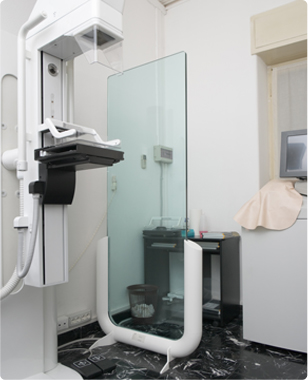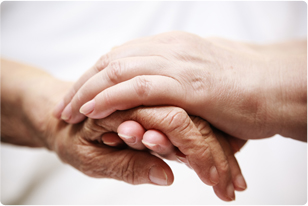Fighting Childhood Cancer

Cancer is a major illness, but not everyone who gets cancer will die from it. Many people alive today have a history of cancer. For them, cancer has become a chronic (on-going) health problem, like high blood pressure or diabetes.
What are the next steps to having discovered that you have cancer? Let us guide you.
Do Children have Cancers?
Children do suffer from cancers but cancers are uncommon during childhood. In the developed countries where statistical data are more complete, cancers affect 120-160 per 1,000,000 children under the age of 15 years every year. Approximately one in every 300-500 people will develop cancers before their 20th birthday.

Why do Children Get Cancers?
The answer to this question is still not resolved for most cancers. For any child who suffers from cancer, it is almost impossible to tell why he or she gets cancer. From a statistical point, we understand that cancers in children may be related to genetic defects, chromosomal aberrations, immune deficiencies, infections like Epstein-Barr virus, Hepatitis B virus and human immunodeficiency virus infections, radiation mishaps, immunosuppressive treatments, or even anticancer treatments. On the other hand, there is NO or insufficient evidence to associate the following with cancers in children: mother’s diet during pregnancy, vitamin K injection given to the newborn infant, vaccinations, electromagnetic field, or power lines near residence.
Are Cancers in Children Similar to Those in Adults?
No, cancers in children are quite unique (see below). Even for cancers of the same type, the biological features and the responses to treatment are very different between children and adults. In general, the outcomes of cancers in children are better than adults. Therefore, it is not appropriate to apply what is known about the cancers in adult to those found in children.
What Investigations are Needed?
Investigations are needed to (a) confirm the diagnosis and classify the cancer type, and (b) define the extent of the disease (staging). The results are important to select the most suitable treatment for the child. In addition to physical evaluation, the child will have blood and urine tests, scans or imaging studies, and part of the tumour tissue will be taken out for microscopic examination (pathological diagnosis). Some children may need a bone marrow biopsy too.
How are Cancers in Children Treated?
After the diagnosis is confirmed and the cancer has been classified and staged, the doctor will decide what the best treatment or combination of treatment that the child would require. The treatment options include surgery, chemotherapy, radiotherapy, and other biologic agents.
Can Children Endure their Treatment?
The answer is yes, but they need good supportive care. The treatment of cancers in children carries both immediate and delayed complications. Some of these complications such as bleeding or infection can be dangerous. It is important that children with cancers should be treated in specialized centres where the medical team is experienced and the facilities are well established.
What are the Outcomes of Treatment?
The outcomes of anticancer treatment in children depend on the primary disease and its extent (see below). On the whole, 70-75% of children diagnosed to date are expected to be long-term survivors (and thus cured), provided that they are treated with contemporary protocols by experienced medical teams with supportive facilities.
Type of Cancer
Acute Lymphoblastic Leukaemia (ALL)
This is the commonest type of cancer seen in children. Almost 30% of childhood cancers are ALL. The affected child may have fever, bruises, tiring easily, and enlargement of the glands in the neck. Most children with ALL need chemotherapy only; some may require radiation treatment to the brain. On the whole, 75-80% of children can be cured after treatment.
Non-Hodgkin Lymphoma (NHL)
This is a cancer of the lymphatic glands. The affected child may have fever, tiring easily, and enlargement of the glands in the neck or inside the chest. Some children may complain of difficulty in breathing or abdominal pain. On the whole, over 80% of children can be cured with chemotherapy alone. Only a small proportion of children will need surgery or radiation treatment.
Brain Tumours
Brain Tumours are the commonest form of solid cancer in children, accounting for 15-20% of the cases. There are different kinds of brain tumours in children and their treatments are not the same. Children with brain tumours may complain of headache, vision problems, vomiting, weakness of one side of the body, unsteadiness in walking, or epilepsy. In general, the affected children will need surgery and often radiation treatment afterwards. Medulloblastomas, a tumour commonly seen in the cerebellum of children, is treated with surgery, radiation and chemotherapy. The chance of cure is 60-70% when the tumour has not spread. Germ cell tumours inside the brain (intracranial) are more commonly seen in Oriental children. They are peculiar because most of them can be treated with chemotherapy and radiation without the need for complicated surgery. The cure rates range from 60-90% depending on the type of germ cell tumour.
Neuroblastoma
This is a cancer of the adrenal glands inside the abdomen. Occasionally they are found in the nervous tissues inside the neck or the chest. The affected child may have fever, aches in the bones, and distended abdomen. For early disease, the outcome is excellent and more than 90% of the children can be cured. Unfortunately, most children present with advanced disease with spread to other parts of the body. Treatment with surgery, chemotherapy and sometimes radiation is needed. High-dose chemotherapy followed by stem cell transplantation is now part of the standard treatment. Only 10-30% of children can survive long-term.
Wilms Tumour
This is a cancer of the kidneys and most of the affected children present with distention of the abdomen. The standard treatment consists of surgery, chemotherapy and radiation. The outcome is excellent with 80-90% of cure even in advanced disease.
Germ Cell Tumours
This is a cancer of the testis in boys or the ovaries in girls. Sometimes they may occur inside the abdomen, the chest, the neck or at the coccyx near the anus. Some patients may need surgery alone, while others can be treated with only chemotherapy. The cure rates ranged from 75-90% even with advanced diseases.
Rhabdomyosarcoma
This is a cancer of the muscles and it commonly presents as a mass. Any part of the body may be affected. Treatment consists of surgery, chemotherapy and radiation. The long-term cure rates ranged from 70-80% when the disease has not spread.
Osteosarcoma (or Osteogenic Sarcoma)
This is a cancer of the bones and commonly present as a swelling in the thigh or leg bones. Treatment consists of surgery and chemotherapy. About 60-70% of children can survive long-term after treatment when the cancer has not spread.
Ewing Sarcoma (or Primitive Neuroectodermal Tumour)
This is a cancer of the nervous system that may affect the bones or the soft tissues. The symptoms are therefore similar to those of Rhabdomyosarcoma or Osteosarcoma. Treatment consists of surgery, chemotherapy and radiation. For disease that has not spread, the long-term survival rates are 70-80%.
Hepatoblastoma
This is a cancer of the liver. The affected child usually presents with a distended abdomen. With surgery and chemotherapy, the long-term survival rates are close to 90% for disease that has not spread.
Retinoblastoma
This is a cancer of the eyeball. During the early stage, parents may notice a white reflex (cat’s eye reflex) in the affected eye, especially when the child’s face is photographed. In early stages, the cancer can be treated by surgery or cryosurgery. For more advanced disease, radiation treatment and chemotherapy may be needed. Long-term survival rates are well above 90% unless the disease has spread beyond the eyeball.

Cancer may be difficult to detect, but for some types of cancer, the earlier it is detected, the better are the chances of treating it effectively. Imaging techniques – methods of producing pictures of the body – have become an important element of early detection for many cancers. But imaging is not simply used for detection. Imaging is also important for determining the stage (telling how advanced the cancer is) and the precise locations of cancer to aid in directing surgery and other cancer treatments, or to check if a cancer has returned. Radiology and Imaging Technologies have been integrated for detection, diagnosis and treatment. The range of specialised radiological and imaging services includes:
Radiology and Imaging Technologies have been integrated for detection, diagnosis and treatment. The range of specialised radiological and imaging services includes:
Asia’s first Symbia Truepoint SPECT CT
Asia’s first Symbia Truepoint SPECT CT integrates the functional sensitivity of a SPECT Gamma Camera System with the detailed anatomical information provided by a 6-slice CT system for enhanced tumour detection. SPECT also uses specific isotopes like I131 Octreotide or MIBG to localise small atypical malignancies like Neuroendocrine tumours.
Aquilion ONE™
Regarded as one of the most advanced CT systems available today, the Aquilion ONE™ images an entire organ in a single rotation, ensuring greater accuracy and diagnostic confidence. In one scan, it provides our medical team with a complete 3D depiction of an organ, as well as how the organ and blood flow are dynamically functioning or moving.
This leap in CT technology lets us perform uniquely comprehensive exams, including functional studies, instead of multiple tests and invasive procedures. For our patients, the Aquilion ONE™ achieves lowered healthcare costs and reduced exposure to radiation dosages.
TomoTherapy®
Since March 2006, we offer patients TomoTherapy® based on the TomoTherapy HI-ART® System. Our patients have benefited from this advanced method of delivering precisely targeted intensity modulated radiation therapy with minimum impact on healthy tissue.
Combining treatment planning, patient positioning and treatment delivery, TomoTherapy® is able to verify the location of the cancer with CT imagery and make adjustments for more effective treatments with reduced side effects.
The PET/CT Machine
Positron Emission Tomography (PET) and Computerised Tomography (CT) are imaging tools that help to pinpoint the location of cancer in the body. The highly sensitive PET scan detects the metabolic signal of active cancer cells and the CT scan provides a detailed picture that reveals the location, size and shape of cancerous growths.
Our PET-CT Machine integrates PET and CT technologies into a single device, allowing both sets of data to be obtained at one time. This aids in accurate tumour detection and localisation for a variety of cancers. The PET-CT scan also helps our medical team assess responses to and the effectiveness of treatments and detect residual or recurrent diseases.
Da Vinci Surgical System
The da Vinci Surgical System is a completely intuitive laparoscopic surgical robot that integrates the latest advancements in robotics and computer-enhanced technology. It allows our specialist surgeons to perform delicate and complex operations through a few tiny incisions with increased vision, precision, dexterity and control.
This translates to shorter hospital stays, and less pain and risk of infections for our patients. Blood loss and the need for transfusions also are reduced and scarring is expected to be less evident. Overall, the da Vinci Surgical System delivers faster recovery times for our patients.
Magnetic Resonance Imaging (MRI)
Magnetic Resonance Imaging (MRI) technology uses a strong magnetic field and radio waves to provide clear and detailed diagnostic images, which in certain areas of the body, are superior to other imaging methods. In cancer imaging, it is especially good for the brain and spinal cord as well as the liver.
Interventional Radiological Services
Interventional Radiological Services involves highly specialised, minimally invasive and highly targeted treatment modalities performed by specially trained radiologists who use image guidance such as CT scans, ultrasounds and angiography, without having to perform surgery. Some treatment modalities for patients with cancer include:
- Chemoembolisation of liver tumours which involves the use of a tiny tube called a catheter to deliver the drugs directly into the artery supplying the tumour and then to block the blood supply to the tumour;
- Radiofrequency ablation, which involves the use of a special needle-like electrode which is inserted, under image guidance, into a tumour through the skin to heat up and kill the tumour by electricity supplied at the frequency of radio waves;
- Image-guided venous access for long term chemotherapy; and
- Image-guided fine needle biopsies.
Mammotome Breast Biopsy System
The Mammotome Breast Biopsy System is a special method which removes tiny abnormalities detected on mammography or ultrasound of the breast, called microcalcifications that can be the earliest sign of cancer. The procedure is fast, causes little pain, and requires no sutures. The suspicious microcalcifications are removed through special needles. Stereotactic (X-rays from two angles) guidance or ultrasound guidance is used to the guide the Mammotome probe for very accurate tissue sampling.
This is of utmost importance to us as the results of the initial biopsy will invariably shape the therapeutic recommendations that our oncologists make. It is only with the insights obtained from histopathology reports that we are able to create individualised treatment plans for our patients, designed to deliver optimal care and results.
The report also establishes the criteria for eligibility for clinical trials, gives information for clinical databases to be used in clinical and basic research and helps provide equality assurance. As we strive to achieve the greatest benefits for our patients, the pursuit of excellence in the field of pathology will continue to be a priority for us.
When you seek care at Parkway Cancer Centres, you have access to a wide variety of treatment options. Depending on your health, physical status, type, origin and stage of cancer, your treatment option may be surgery, radiotherapy, chemotherapy or a combination of these, which would then be referred to as the, Multi–Disciplinary Approach.

Chemotherapy
The biggest advancement in the field of cancer treatment is the fast expanding arsenal of medicines in the treatment of cancer. These include cytotoxic agents as well as biologic agents and “targeted cancer therapies”.
These newer chemotherapies are associated with higher effectiveness, less side effects and improved overall results. Some of these drugs have no hair loss, nausea, vomiting or other significant side effects.
The administration of chemotherapy is closely supervised by the medical oncologists and carried out by nurses with specialised training in Oncology.
Chemotherapy is given in six ambulatory treatment centres in Gleneagles Hospital, Mount Elizabeth Hospital and Mount Elizabeth Novena Hospital.
The various applications of chemotherapy include:
- Upfront or induction chemotherapy to shrink the tumour size before definitive local treatment with either surgery or radiotherapy;
- Concurrent chemo-radiation where the drugs are used as radio-sensitisers to improve the effectiveness of radiotherapy;
- Adjuvant chemotherapy (therapy after the initial treatment of cancer to suppress the secondary tumour formation) where the drugs are given after surgery or radiotherapy to treat micro-metastases which cannot be seen, so that patients will have a higher chance of cure;
- Curative chemotherapy in the treatment of cancers which are very chemo-sensitive like lymphoma, germ cell tumours and leukemias; High-dose chemotherapy and stem cell rescue;
- Palliative chemotherapy for advanced cancers aimed at killing the cancer cells, controlling disease, preserving quality-of-life and prolonging overall survival.
Radiation Therapy
The greatest challenge for Radiation Therapy is to attain the highest probability of cure with the least side effects.
Modern advances in computers and the parallel advances in imaging and biomedical engineering have allowed a higher level of complexity to be incorporated into radiation treatment planning and delivery. This has resulted in better localisation of tumours, more accurate delivery of radiation into the tumour and better avoidance of radiation high doses into normal tissues.
Our Centre offers proven radiation treatment for cancers and benign tumours. These treatments are either carried out alone or as part of a multi-modality treatment (with chemotherapy or surgery).
The treatments include:
- Intensity-Modulated Radiation Therapy (IMRT)
- Image-Guided Radiation Therapy (IGRT)
- 3D Conformal Radiation Therapy
- Conventional Radiation Therapy
- Stereotactic Radiation Therapy
- Radiosurgery
- Brachytherapy and Implants
Since 2006, we offer patients TomoTherapy® (Image-Guided Radiation Therapy) using a TomoTherapy HI-ART System.
It delivers precise treatment doses to the tumour and minimum radiation is deposited on healthy tissue.
With this system, the radiation oncologist and therapists can check the location of the patient’s tumour before each treatment, using the computed tomography images taken with the machine, before delivering painless and precise radiation therapy based on a carefully customised plan.
Surgery
Our specialist surgeons have extensive experience in the surgical management of cancer. The major advances in surgery are readily available in our Centre.
These include radical surgery for advanced cancers, conservation surgery, minimal access surgery and reconstructive surgery.
We have surgical oncologists who specialise in each of these areas:
- Breast surgery
- Colorectal surgery
- Thoracic surgery
- Head and Neck surgery
- Otorhinolaryngology
- Gynaecological surgery
- Neurosurgery – Orthopaedic surgery
- Urological surgery
- Gastrointestinal and Hepatic surgery
- Reconstructive surgery
- General surgery
Supporting the surgeons is a team of anaesthetists, intensivists, and physiotherapy and rehabilitation team to provide the necessary pre- and post-operative care to ensure safe and speedy recovery.

Palliative Care is given to improve the quality of life of patients who have a serious or life-threatening disease. The goal of palliative care is to prevent or treat as early as possible the symptoms of the disease, side effects caused by treatment of the disease, and psychological, social, and spiritual problems related to the disease or its treatment. It can also be called comfort care, supportive care, and symptom management.
Palliative care:
- Provides relief from pain and other distressing symptoms;
- Affirms life and regards dying as a normal process;
- Intends neither to hasten or postpone death;
- Integrates the psychological and spiritual aspects of patient care;
- Offers a support system to help patients live as actively as possible until death;
- Offers a support system to help the family cope during the patients illness and in their own bereavement;
- Uses a team approach to address the needs of patients and their families, including bereavement counselling, if indicated;
- Will enhance quality of life, and may also positively influence the course of illness;
- Is applicable early in the course of illness, in conjunction with other therapies that are intended to prolong life, such as chemotherapy or radiation therapy, and includes those investigations needed to better understand and manage distressing clinical complications.
In most of the world, the majority of cancer patients are in advances stages of cancer when first seen by a medical professional. For them, the only realistic treatment option is pain relief and palliative care. Effective approaches to palliative care are available to improve the quality of life for cancer patients.
Disclaimer Notice:
The information provided on this website is not intended or implied to be a substitute for professional medical advice, diagnosis or treatment. All content, including text, graphics, images and information, contained on or available through this website is for general information purposes only. Parkway Cancer Centre makes no representation and assumes no responsibility if the information, contained on or available through this website, is taken without our specialists’ consult.
